Nouakchott is the capital of Mauritania and the largest city in the country, serving as the administrative and economic center.

Nouakchott features a mix of traditional and modern structures and houses several markets. However, despite its rapid growth, Nouakchott still faces several challenges, including desertification, inadequate infrastructure, and poverty, but it continues to evolve and develop, shaping its unique character in the process.
Where is Nouakchott?
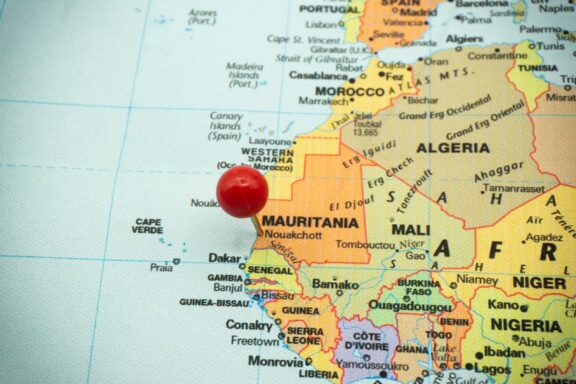
Nouakchott is located in the western part of Mauritania, in West Africa. It’s positioned on the Atlantic coast, on the edge of the Sahara Desert. The geographical coordinates for Nouakchott are approximately 18.0735 °N latitude, 15.9585 °W longitude.
This coastal location has made it an important hub for trade and commerce. The city is also relatively close to other important cities in West Africa, such as Dakar in Senegal to the south and Nouadhibou in northern Mauritania.
History of Nouakchott
Nouakchott is relatively young, especially compared to many other capital cities worldwide. Until the mid-20th century, it was a small fishing village of little note. However, the end of French colonial rule and Mauritania’s subsequent independence in 1960 led to Nouakchott’s selection as the capital. This choice was partly based on its central location between black Africa to the south and Morocco to the north.
Significant growth followed this selection, and Nouakchott’s population expanded rapidly from just a few thousand residents in the 1950s to hundreds of thousands by the 1980s. This was partly driven by droughts in the Sahel during the 1970s and 1980s that pushed rural inhabitants into the city. The rapid expansion led to the development of shanty towns, as the infrastructure struggled to keep pace with the influx of people.
The city’s layout reflects a combination of influences. Some districts, such as Ksar, maintain a traditional style of narrow, winding streets reminiscent of Mauritania’s historical ties to the Arab world. Other areas of the city showcase more modern urban planning styles.
Mauritania’s political history also influenced Nouakchott’s development. During the period of one-party rule from the 1960s to the late 1980s, the state led efforts at modernization, building infrastructure, and creating institutions like the University of Nouakchott. Following the introduction of multiparty politics in the 1990s, the city has continued to expand and evolve, with an increasing emphasis on improving living conditions, infrastructure, and economic opportunities.
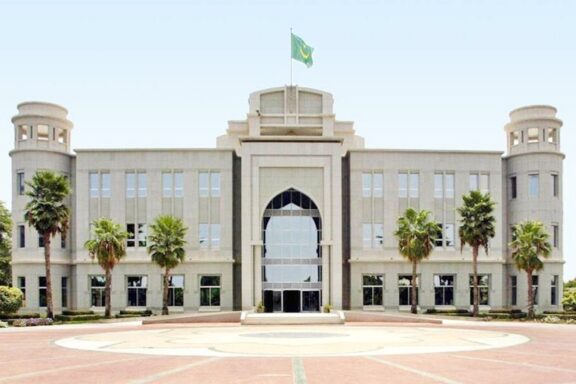
In terms of historical events, one significant occurrence was the failed coup attempt in 2003 against then-president Maaouya Ould Sid’Ahmed Taya. It led to several days of fighting in the streets of Nouakchott before it was put down.
Today, Nouakchott is a bustling city and continues to be Mauritania’s vital cultural, economic, and political hub.
Features of Nouakchott
Nouakchott, the sprawling capital of Mauritania, stretches out onto the sandy plains of the Saharan fringe along the Atlantic coast. It is a city of contrast, showcasing the meeting point of traditional and modern aspects of Mauritanian life.
One of the first things you may notice is its fascinating mix of architecture, with humble huts juxtaposed against modern buildings. Amidst the city’s wide, sandy streets and bustling traffic, the vibrant markets bring the essence of Mauritanian culture to life.
Geography and Climate
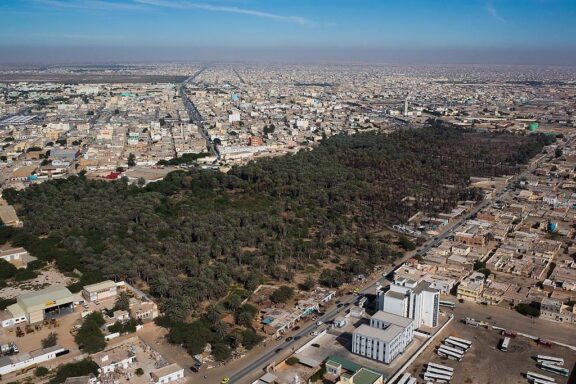
Situated along the Atlantic coast, Nouakchott is largely flat, with a geography dominated by sandy plains and dunes, characteristic of its proximity to the Sahara Desert. This flat, desert geography extends to the city’s outskirts and beyond, with only sparse vegetation to break the monotony of the sandy expanse.
As for the climate, Nouakchott experiences a hot desert climate (Köppen climate classification BWh). This translates to sparse rainfall, clear skies, and high yearly temperatures. The temperature can reach above 40 °C (104 °F) during the hottest months, typically between May and September.
During the cooler months, from December to February, the temperature can drop to around 15 °C (59 °F) at night. Rainfall is minimal and mainly occurs during the short rainy season, from July to September.
Population
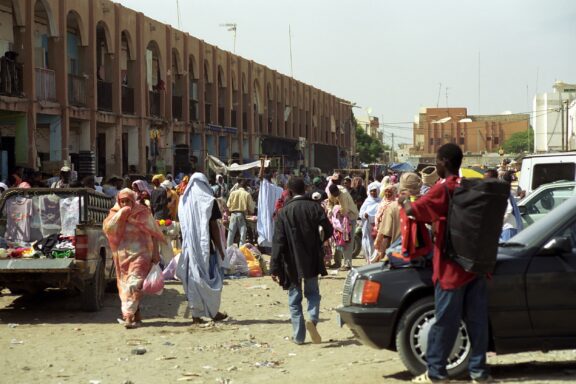
Nouakchott is home to over 1 million people in Mauritania, home to a significant proportion of the country’s population. The city has seen a rapid increase in population since Mauritania’s independence, largely due to rural-urban migration driven by desertification and diminishing livelihoods in the rural areas.
The people of Nouakchott are ethnically diverse, reflecting the broader diversity of Mauritania. The city is home to a mix of ethnic Moors (both Arab-Berber “White Moors” and Haratin “Black Moors”), as well as other ethnic groups like the Pulaar, Soninke, and Wolof. The city’s populace speaks various languages, including Arabic, Pulaar, Wolof, and French.
Economy
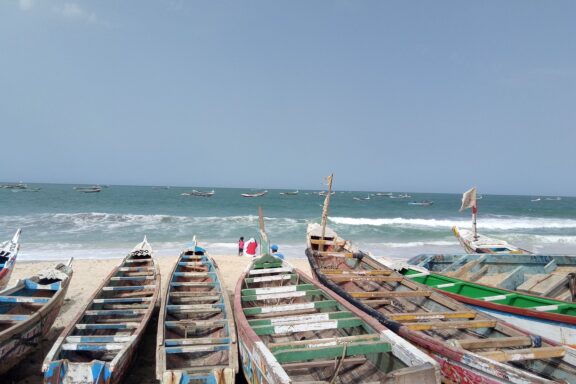
Nouakchott is the economic center of Mauritania and features a variety of industries. Key sectors include fishing due to its coastal location, which plays a significant role in the local and national economy. Port de Pêche is a bustling hub where you can witness the day’s catch being brought ashore.
Trade is another integral aspect of Nouakchott’s economy, with goods flowing in and out of the city for domestic consumption and export. The city’s markets are lively centers of commercial activity, and products range from traditional Mauritanian jewelry to everyday goods and foodstuffs.
As the capital city, Nouakchott is the country’s administrative hub, with a sizable portion of its population employed in public administration and services. The city also has a growing banking and finance sector, reflecting Mauritania’s efforts to modernize its economy.
Due to these economic activities, Mauritania made it into the 20 richest countries in Africa. But despite of the recent economic development, many of Nouakchott’s residents still live in poverty. The city still faces several economic challenges, including high unemployment rates, insufficient infrastructure, and social inequality.
Things to Do and Places to See in Nouakchott
Nouakchott brims with an array of diverse attractions and activities. Now, let’s delve into some of the most sought-after places and experiences this captivating city offers.
1. Nouakchott Silver Market and Fish Market
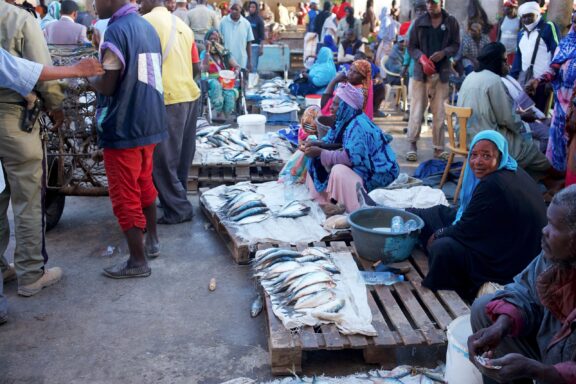
Visiting the Nouakchott Silver Market is like stepping into a treasure trove of traditional craftsmanship. Here, intricate silver jewelry, from necklaces and bracelets to earrings and rings, all bearing the imprint of Mauritania’s deep-rooted artisanal heritage, are on display.
As you navigate the labyrinth of stalls, you can watch the silversmiths skillfully craft intricate designs, carrying on a tradition handed down through generations. Each piece tells a story, reflecting the region’s rich cultural tapestry. Whether shopping for keepsakes or simply observing, the Silver Market is a unique window into Mauritanian tradition.
Equally vibrant but in a different way, the Nouakchott Fish Market, located by the city’s fishing port, is a hive of activity. Brightly painted pirogues return from the Atlantic daily with a bounty of seafood.
As the catch is hauled ashore, the market comes alive with traders, customers, and curious onlookers. The variety of seafood is astounding, from fish of all shapes and sizes to octopus and crabs. The energy is infectious, the colors captivating, and the spectacle is an unforgettable immersion in Nouakchott’s daily life.
2. National Museum of Mauritania
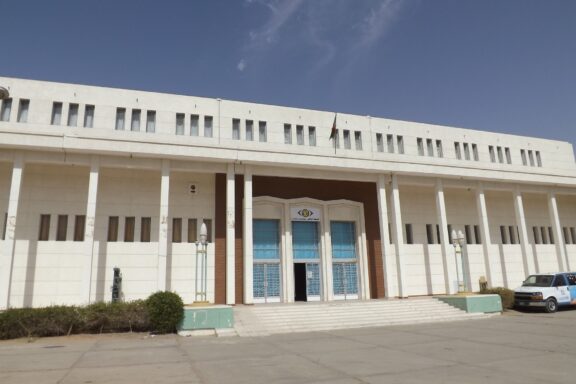
The National Museum of Mauritania, also known as the Musée National, is a key cultural institution in Nouakchott. It houses diverse artifacts, providing a comprehensive overview of Mauritania’s rich and varied history. The museum’s exhibits span from prehistoric times, encompassing archaeological finds, traditional arts and crafts, ethnographic displays, and geological specimens.
It’s a place where you can walk amongst ancient rock carvings, study traditional Berber jewelry, or marvel at the diversity of the country’s natural resources. In addition, the museum often hosts temporary exhibits featuring aspects of Mauritanian culture and heritage. An afternoon at the National Museum of Mauritania offers an enriching journey through time, revealing the stories and traditions that have shaped this corner of West Africa.
3. Relax on Plage de Nouakchott
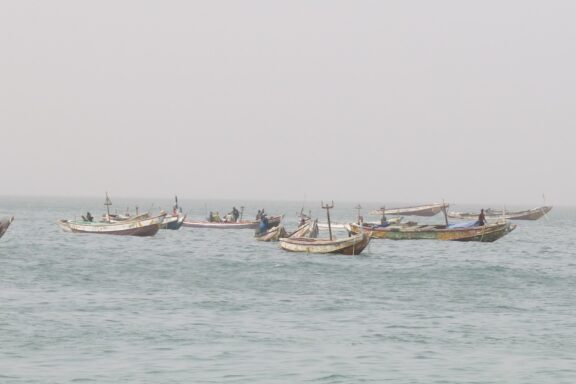
Plage de Nouakchott, located on the Atlantic coast just a short distance from the city center, is a haven of tranquility against the backdrop of the bustling city. The beach, with its vast expanses of golden sand flanked by the rhythmic waves of the Atlantic Ocean, offers the perfect setting for a relaxing day.
As you stroll along the beach, you can watch the fishing boats on the horizon, join local families enjoying picnics, or soak up the serene surroundings. Remember to stay until sunset, when the sky transforms into a breathtaking palette of colors — it’s a sight not to be missed. Despite its proximity to the city, Plage de Nouakchott offers a respite that feels a world away from the urban hustle and bustle.
4. Saudi Mosque
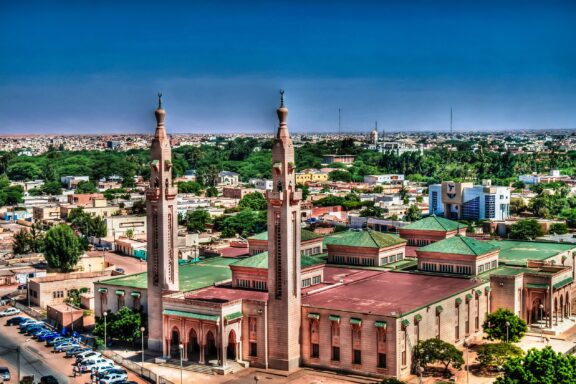
The Mosque of Saudique, also known as the Saudi Mosque, is an iconic symbol of Nouakchott. It’s one of the largest mosques in Africa, its striking architecture reflecting Islamic design principles blended with local Saharan influences. The mosque’s tall minaret dominates Nouakchott’s skyline, while its expansive courtyard and prayer hall can accommodate thousands of worshippers.
The mosque is a place of worship and a center of community life. While non-Muslim visitors may not be allowed to enter, the mosque is still an awe-inspiring sight from the outside, particularly at sunset when it’s bathed in a golden glow.
5. Parc National du Banc d’Arguin
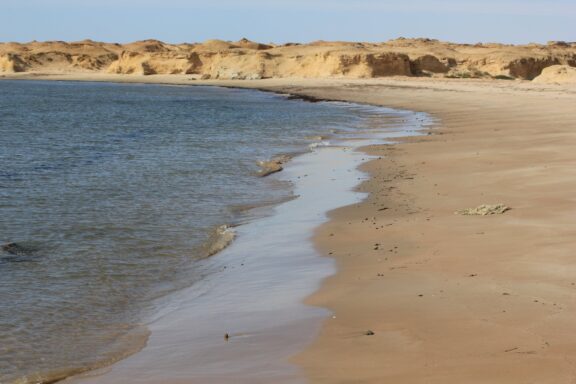
Just about 40km away from Nouakchott lies the Parc National du Banc d’Arguin, a UNESCO World Heritage Site renowned for being one of the world’s most important nesting grounds for migratory birds. Stretching along the Atlantic coast, the park is a mesmerizing landscape of dunes, swamps, shallow coastal waters, and small islands.
Bird lovers will be in paradise here, seeing various species, including flamingos, broad-billed sandpipers, and pelicans. Even if you’re not an avid birder, the spectacle of thousands of birds taking flight is breathtaking. The park is also home to several species of turtles and various marine life, making it an important biodiversity hotspot.
6. Nouakchott Cultural Center
The Nouakchott Cultural Center is the city’s premier contemporary arts and culture institution. With a calendar full of events, the center hosts art exhibitions, music concerts, dance performances, poetry readings, and more, all showcasing the talents of Mauritanian and other African artists.
The center aims to foster creativity, celebrate cultural diversity, and promote understanding through the arts. Whether browsing the latest art exhibit or catching a performance, visiting the Nouakchott Cultural Center is a wonderful opportunity to engage with Mauritania’s vibrant contemporary culture.
Frequently Asked Questions
What is the best time to visit Nouakchott?
The best time to visit Nouakchott is between November and February when the weather is cooler. The temperatures during these months are more pleasant, making it ideal for exploring the city and its surroundings.
What is traditional food and cuisine like in Nouakchott?
Like in much of West Africa, Mauritanian cuisine revolves around grains, fish, and meat. The country’s staple dish is “Thieboudienne,” a flavorful fish and rice dish often cooked with various vegetables. Another popular dish is “Mechoui,” which is whole roasted lamb or mutton. Mauritanian mint tea, often served after meals, is also a must-try.
Is it safe to visit Nouakchott?
While crime levels are generally low and typically non-violent, it’s recommended to steer clear of deserted and poorly lit parts of the city, including its surrounding beach areas, for safety precautions.
What’s a must-try dish in Nouakchott?
“Thieboudienne,” the national dish of Mauritania, is a must-try. This flavorful fish and rice dish is a staple of Mauritanian cuisine and can be found in most local eateries.
What souvenirs can I bring home from Nouakchott?
The Nouakchott Silver Market is a great place to find unique souvenirs. Traditional Mauritanian silver jewelry, locally crafted textiles, leather goods, and wooden handicrafts make wonderful souvenirs for your trip.
What language is spoken in Nouakchott?
Arabic is the official language of Mauritania and is widely spoken in Nouakchott. Many people also speak French due to the country’s historical ties to France. Other languages spoken include Pulaar, Wolof, and Soninke.
How can I get around in Nouakchott?
Taxis are the most common form of public transportation in Nouakchott. It’s advisable to agree on the fare before the journey. Car rental services are also available, although navigating the city’s traffic may be challenging for visitors.
Currency in Nouakchott?
The currency of Mauritania is the Mauritanian ouguiya.
Final Thoughts
With its unique blend of traditional and modern elements, Nouakchott offers a distinctive travel experience. Its lively markets, rich cultural heritage, unique culinary flavors, and serene coastal landscapes present an intriguing facet of West African life far removed from the conventional tourist trails.
Although the city has challenges, it also has a compelling allure shaped by its rapid growth and evolving identity. For those looking to immerse themselves in a culture that intertwines Arab and African influences or who are curious about life on the edge of the Sahara Desert, Nouakchott offers a rewarding journey. As with any destination, the experiences, interactions, and memories make a visit worthwhile. In that sense, Nouakchott is undoubtedly a destination to consider.
Image Sources and Copyright Information
- Map with Pin on Nouakchott, Mauritania: © evan_huang/Shutterstock
- Presidential Palace in Nouakchott: © Ivik93@Wikimedia | CC BY-SA 4.0 International
- Aerial View of Nouakchott Cityscape: © Laminesall96/Wikimedia | CC BY-SA 4.0 International
- Bustling Street Market Scene: © Attila JANDI/Shutterstock
- Fishing Boats on Shoreline: © Shrinidhi Takle/Flickr
- Bustling Fish Market Scene: © Senderistas/Shutterstock
- Exterior of the National Museum of Mauritania: © Norbert Bánhidi/Flickr
- Fishing Boats on Hazy Sea: © Samabm pics/Flickr
- Saudi Mosque in Nouakchott Cityscape: © Homo Cosmicos/Shutterstock
- Coastline of Banc d’Arguin National Park: © Carlos Reis/Flickr